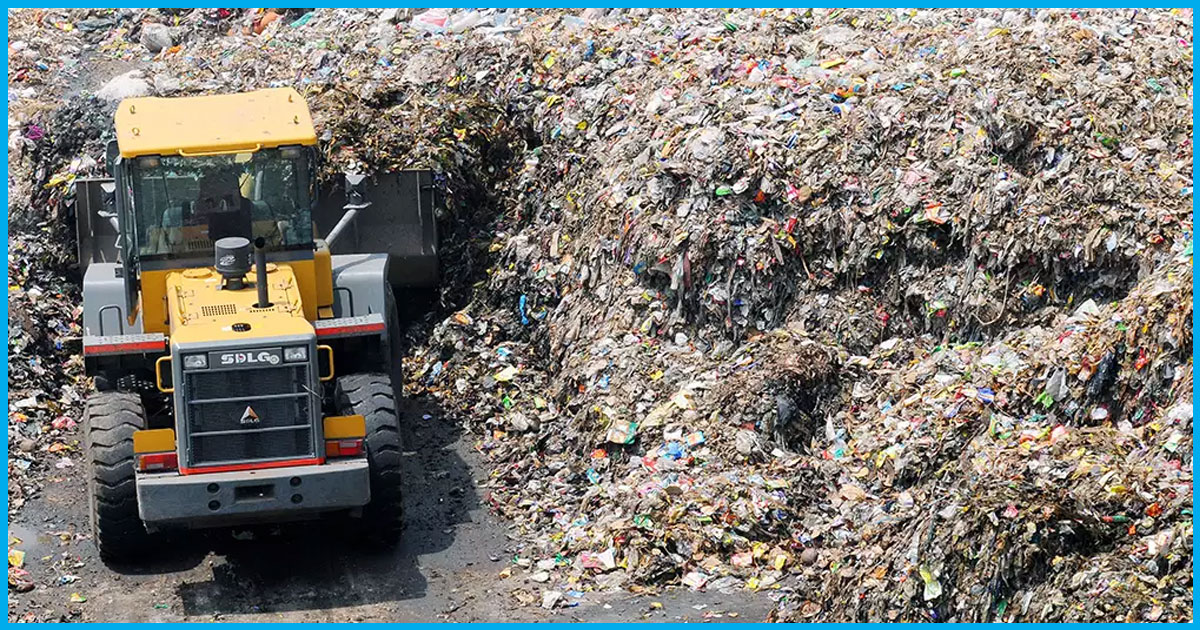
‘Mount Everest Of Garbage’ In Ghazipur, Delhi Is Causing Respiratory & Other Sickness Among Locals
20 May 2018 4:31 AM GMT
Editor : Ankit Sharma Sharma
Green tea Addict | A Tree Hugger | Born for Change
A garbage dumping site, Ghazipur landfill, in Delhi is estimated to be spread over 70 acres of land, reaching a height of 50 meters with 13 million tons of garbage.
The landfill is also known as the Mount Everest of Garbage among the residents living close by. Reportedly, out of the four main garbage dumping spots in the capital, Ghazipur landfill considered to be North India’s biggest. According to sources, this site has reached a height of 50 meters, which is way higher than the 20-metre limit stipulated by the solid-waste management rule of 2016.
Last year in September, it collapsed following days of heavy rain, killing two people. Managed by the East Delhi Municipal Corporation (EDMC), Ghazipur landfill has been a dumping ground for waste for more than 30 years. According to The Indian Express, Ghazipur landfill had reached its extreme limit way back in 2000 but continues to get 1,600 metric tonnes of a waste of Delhi on a daily basis even 17 years after it was scheduled for closure. The city’s daily quantities of generated waste are expected to double by 2024.
The Supreme Court rightly observed in a March hearing: “garbage mounds at Ghazipur landfill site will (soon) be as high as the Qutub Minar”.
The water, air and soil pollution from the open landfill has robbed the nearby residents of their health. With the air being contaminated by the vicious gas emitted from the garbage and the smell being unbearable, many residents have developed respiratory diseases and they have no choice but to keep their windows shut. During the monsoon season, it becomes unbearable as the stink grows even stronger and leaches out from the trash site thus, entering adjacent canals.
“We will protest by collecting the waste from the site and throwing the garbage in front of Parliament soon,” Tej Pal Singh, one of the many angry resident-activists, told IANS. With a government school barely 100 metres away from the dump, children there are suffering the worst. “Students’ health is deteriorating every day. When it gets unbearable we sometimes tell students not to come but cannot close the schools arbitrarily,” said a teacher to The Times of India.
Praying at the mosque near the dump yard is difficult as thousands of flies and mosquitoes hover around along with the unbearable stink. Even the Ghazipur police station built ten years ago near the dump yard is affected. “Whenever a policeman is posted to this station he knows that 20 years of his lifespan is reduced,” said a constable.
Residents are suffering from a plethora of diseases ranging from respiratory illnesses, rashes, allergies, fevers, etc.
According to civic authorities in Delhi, the city doesn’t have a proper, modern and eco-friendly waste management system. The around 8,500 metric tonnes of waste produced daily is dumped in three major landfills — Ghazipur, Bhalaswa and Okhla.
The Ghazipur dump yard was initially designed in 1984 with the outmoded concept of producing electricity by burning the garbage. However, the waste produced very low electricity and had more negative effects than any positive outcome, according to a Delhi Power Department official.
A district administration official, who wished not be identified, blamed residents for what they are going through and absolved the civic administration of all blame. He told IANS that the residents were not authorised to stay near the Ghazipur landfill area and that those living around were squatters.
Also published on Medium.
 All section
All section













